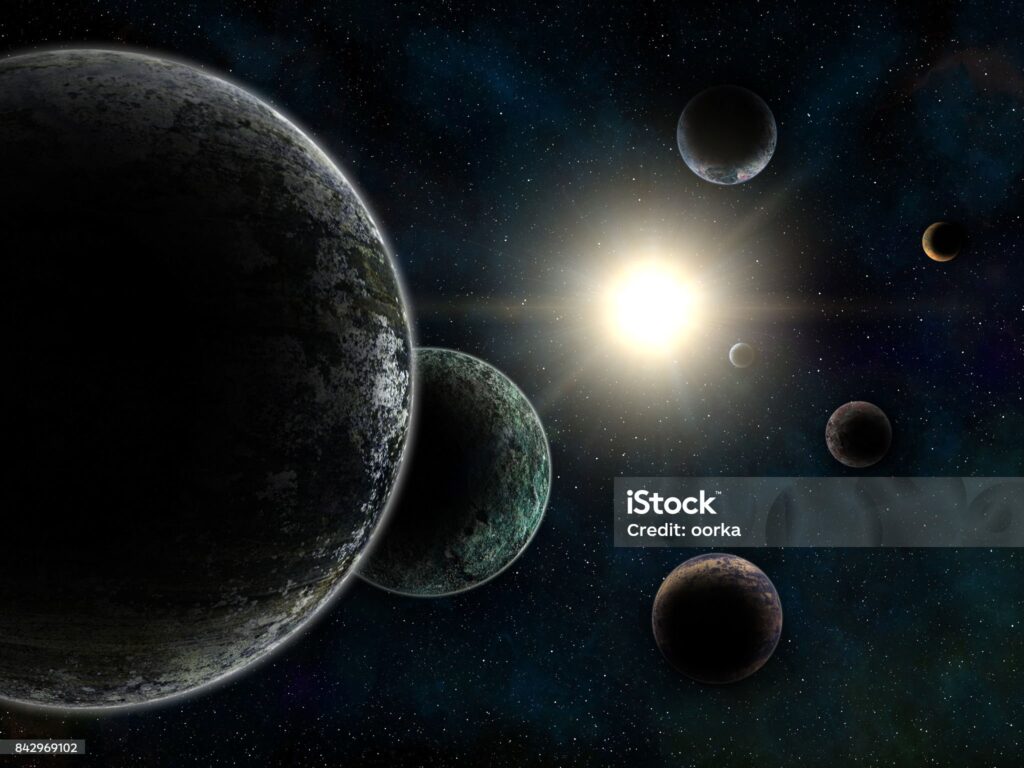Oort Cloud Planet: 7 Astonishing Secrets Revealed!
Table of Contents
ToggleOort Cloud Planet: The Hidden Neighbor of Our Solar System
Oort Cloud Planet could be our solar system’s hidden neighbor, lurking in the distant reaches of the Oort cloud. Discover the possibilities and implications of this intriguing find.

© rwarnick
Introduction
Oort Cloud Planet is an exciting possibility that has captured the attention of astronomers. Our solar system, home to eight well-known planets and the reclassified dwarf planet Pluto, might have more members than we thought. The Oort cloud, a distant and mysterious region filled with icy bodies and rocks, could be hiding an undiscovered planet.
The Oort Cloud: A Brief Overview
The Oort cloud is a spherical shell surrounding our solar system, extending far beyond the orbit of Pluto. It is composed of icy chunks and rocky debris, remnants from the formation of the solar system. This distant region is tens of thousands of times farther from the Sun than Earth, making it an enigmatic area for astronomers to study.
Why the Oort Cloud Planet is Plausible
Nathan Kaib, an astronomer at the Planetary Science Institute, suggests that it’s entirely possible for our solar system to have captured an Oort cloud planet. These hidden worlds are a class of planets that should exist but have received little attention until now. If an Oort cloud planet exists, it is likely to be an ice giant, similar to Neptune.
Gravitational Interactions: The Birth of an Oort Cloud Planet
Large planets like Jupiter and Saturn often form as twins, but their massive gravitational forces can destabilize each other. This interaction could push a planet out of the solar system entirely or send it to the outer reaches, where the Oort cloud resides. Such gravitational nudges might explain the presence of an Oort cloud planet far from the Sun.
Eccentric Orbits: Evidence of a Turbulent Past
According to Sean Raymond from the University of Bordeaux’s Astrophysics Laboratory, planets that survive these gravitational interactions often have eccentric orbits. Unlike Earth’s nearly circular path around the Sun, an Oort cloud planet could have a significantly elongated orbit. These eccentric orbits are like scars from the planets’ violent pasts, providing clues about their history.
Challenges in Detecting the Oort Cloud Planet
Detecting a planet in the Oort cloud is extremely difficult due to its vast distance from Earth. Malena Rice, an astronomer at MIT, notes that it can sometimes be easier to spot exoplanets hundreds of light-years away than a planet in our own backyard. If a Neptune-sized planet exists in the Oort cloud, it’s likely we haven’t found it yet due to the challenges of observing such a distant object.
The Importance of Discovering an Oort Cloud Planet
Finding an Oort cloud planet would significantly enhance our understanding of the solar system. It would reveal new insights into the formation and evolution of planetary systems, providing a more comprehensive picture of our cosmic neighborhood. Moreover, it would validate theories about hidden worlds and the dynamic processes that shape planetary orbits.
Technological Advances and Future Prospects
Advances in technology and astronomy could eventually lead to the discovery of an Oort cloud planet. Improved telescopes and observational techniques might allow us to detect such distant objects more accurately. Continued research and exploration of the Oort cloud will be crucial in uncovering the mysteries of this remote region.
Conclusion
The possibility of an Oort cloud planet adds a fascinating dimension to our understanding of the solar system. While detecting such a planet is challenging, the potential discoveries and insights it could provide are immense. As technology advances and our exploration of the Oort cloud continues, we may one day confirm the existence of this hidden neighbor, enriching our knowledge of the universe.
Final Thoughts
Oort Cloud Planet is not just a theoretical concept but a real possibility that could change our perception of the solar system. As we continue to explore and study the distant reaches of our cosmic neighborhood, the discovery of such hidden worlds will enhance our understanding of the universe and our place within it.




